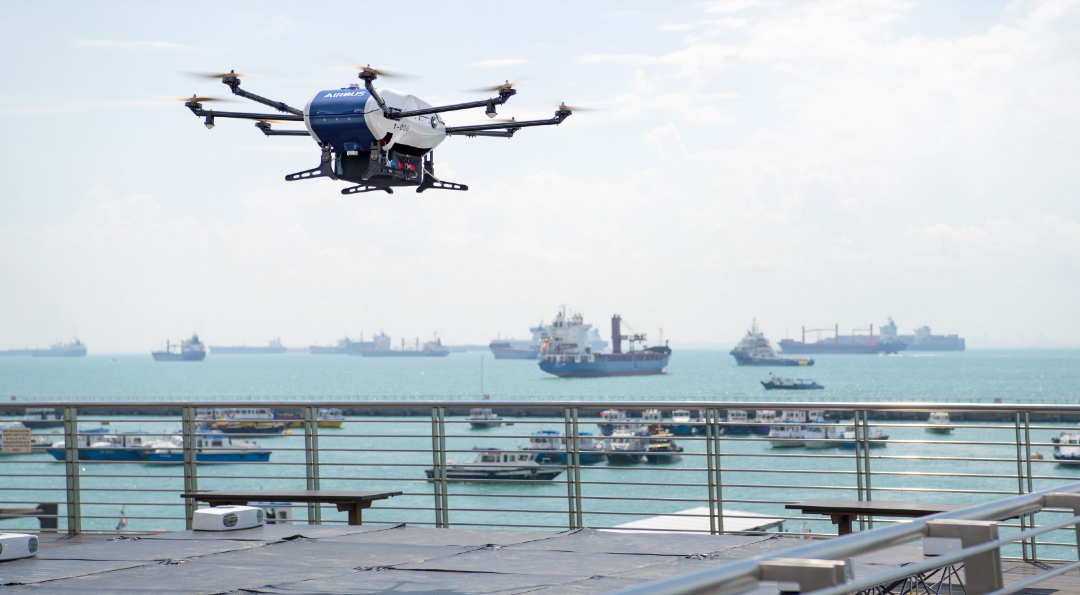Photo by Airbus
By Deebann Saravanan
Unmanned aircraft systems (UAS) and its uses are becoming more and more popular across industries. Airbus and M1 Limited started a 5G network connectivity trial with IMDA in order to innovate, enable effective and dependable operation of UAS flying in the lower airspace.
This trial’s objective was to determine whether 5G networks will be an effective primary method of communication for UAS operations. The second was to assist in the design and creation of the first standalone 5G modem to be certified for use in aviation and maritime applications, with the goal of speeding the growth of the 5G ecosystem. Airbus is one of the pioneers to perform an experiment of this kind, and the testing started in 2019 at the very early phases of 5G standalone architecture (SA).
It was only reasonable for Airbus to concentrate their trial on measuring characteristics that give an indicator of the failure likelihood given that safety considerations are of the utmost importance. Dr. Anoop Kumar Krishna, Head of Airbus Unmanned Aerial System Traffic Management (UTM) Lab, notes that “the chance of failure gives an indication of reliability.”
Dr. Anoop continues, “Secured and dependable connectivity is essential to ensure that the UAS can operate safely and effectively during all phases of flight. Since standard mobile data cannot efficiently sustain UAV connectivity, remote navigation, or surveillance, the lower latency of 5G is projected to enable a more integrated network. Airbus is testing 5G SA at various altitudes as part of this trial, and after the trial’s conclusion, they will draw conclusions.
The ability to use 5G for navigation will be a game changer because the current widespread way of navigation, the global navigation satellite system (GNSS), still has significant flaws, such as accuracy in urban environments. Base stations for the 4G public terrestrial network are currently orienting their antennas towards the land mass. Technically, this renders them less suitable for assisting aerial use cases.
According to Dr. Anoop, “With the present 4G network, we can operate up to 200 feet without any significant concerns.” In this trial, M1 also observed a “ducting” effect at higher elevations, which increased the distances over which 5G signals could travel in comparison to scenarios that took place on the ground. This is because radio waves are stopped in their tracks by the atmospheric duct and do not propagate through the atmosphere isotopically. The problem of heat dissipation needs to be solved with 5G SA aerial modems.
One of the main achievements that has come out of this trial, among the intriguing findings and novel insights that are anticipated, is the certification of the first 5G SA modem for use in aviation and maritime applications. Together with their business partner Team One Technologies, M1 developed the modem. The modem is now on par with military grade modems and has achieved the DO160 environmental qualification standard, making it incredibly durable.
Airbus has previously participated in 5G experiments and currently has global partnerships active. Since then, the future of urban air mobility has been discovered and innovated thanks to a memorandum of understanding (MoU) inked by Airbus and M1 to jointly conduct 5G SA trials and experiments in urban locations.
To reach the editorial team on your feedback, story ideas and pitches, contact them here.

